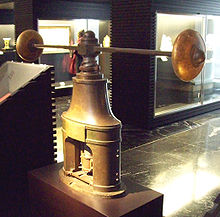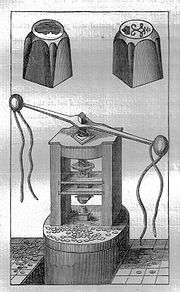- Milled coinage
-

Numismatics Terminology
 Portal
PortalCurrency Circulating currencies
Community currenciesAncient currencies Medieval currencies
Modern currencies-
Africa, The Americas,
Europe, Asia, Oceania
Production -
Mint, Designers
Exonumia In numismatics, the term milled coinage (also known as machine-struck coinage) is used to describe coins which are produced by some form of machine, rather than by manually hammering coin blanks between two dies (hammered coinage) or casting coins from dies.
History
The earliest machine known for producing coins is the screw press, invented by Leonardo da Vinci in the 15th century, powered by a water mill. With the arrival of machine-driven and struck coins also came new technology and techniques for stamping the coin's edge with a reeded or milled edge or impressed with designs. The presence of reeding shows that the coin's edge has not been shaved or clipped.
The new edging processes for coins impeded them from being clipped into smaller pieces as did happen when coins were hammer-struck. Hence, milled edges were originally designed and intended to show that none of the metal had been shaved off the coin. Earlier, coins were shaved or clipped to almost half of their minted weight by unscrupulous persons and it is from this phenomenon that we derive the phrase "clip artist" to mean a thief. This form of debasement in Tudor England led to the formulation of Gresham's Law, so named after Sir Thomas Gresham.
The earliest milled coins produced in England date from the early 1560s, but milled coinage did not entirely replace hammered coinage until 1662.
The British numismatic term for the reeded ridged edge is graining and the reeds are called crenellations.[citation needed]
See also
Categories:- Numismatics
- Currency production methods
Wikimedia Foundation. 2010.



